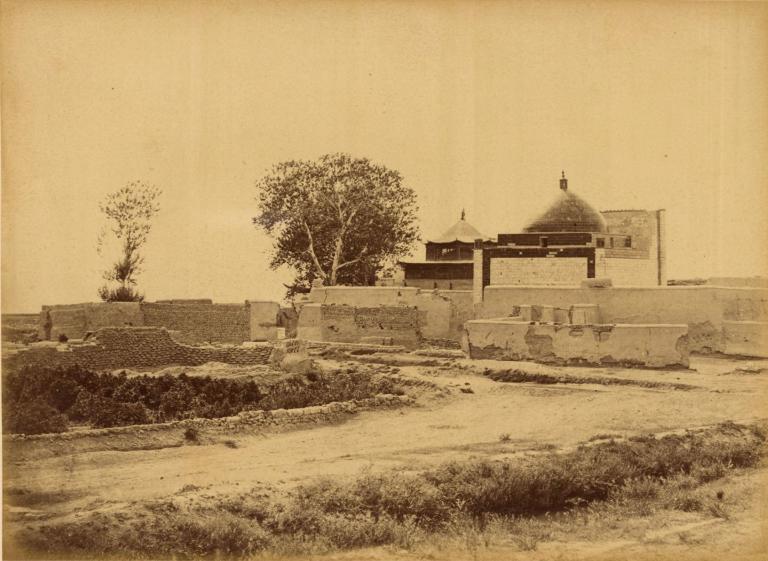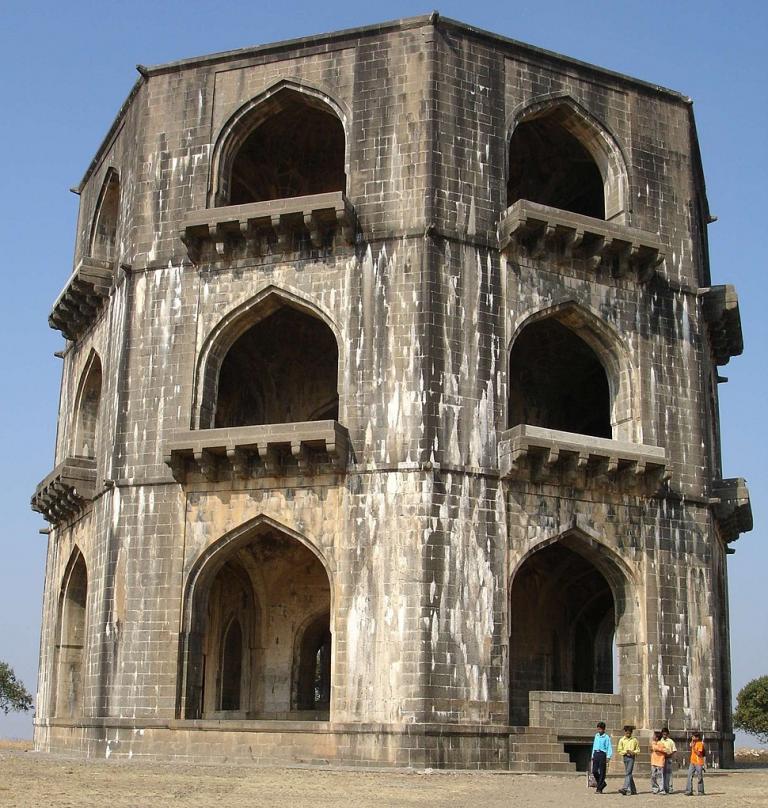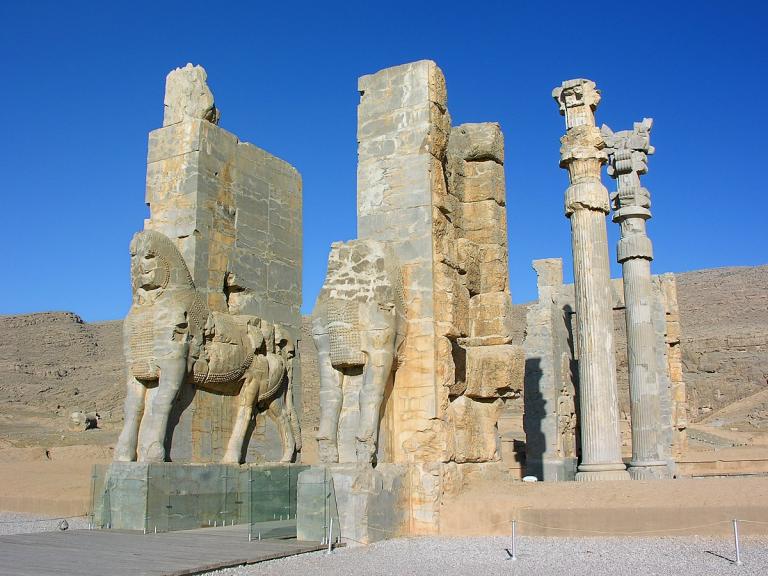Hami Khanate Prince Tombs
5 min readThe Hami Khanate Prince Tombs,located in Huicheng town of today’s Hami City,were burial buildings of Hami Khanate princes and their royal members in the Qing Dynasty.The Hami Khanate Prince Tombs are called”Aletongleke”by Uyghur people,meaning”The Land of Gold”.
The Hami Khanate Prince was a title granted to local feudal lords in Hami by the Qing government.In 1697,Uyghur leader Erbeidula of Hami was canonized by Emperor Kangxi as”First-class Zhasake Tarkhan”because of performing meritorious service in helping the Qing government to squash the Geer Dan rebellion,and his tribe was programmed as Xianghong Hui Banner,with his nobility title being hereditary.The nobility title was elevated from Duke,Beizi,Beile to Prince.The fourth generation Yusupu was canonized asJunwang,and the seventh generation Bossier was posthumously canonized as Heshuo Prince after death.Islam in the Qing Dynasty was called Mohammedanism,Xinjiang was called Huijiang and Islamic people were called”Hui Tribe”before the establishment of the province,thus Uyghur seigniors were called”Hami Khanate Prince”,ruling the whole territory of Hami and Shanshan except for Barkol.

When Hami Khanate Prince Erbeidula was canonized in the 36th year of theregion of Emperor Kangxi(1697),he was not the prince,but the first-class Tarkhan.He was not promoted to”Prince”until the seventh generation Bossier inherited the nobility title in 1813.The nobility title inherited to the ninth generation Shamu Husuote in 1930 was ended with the death of Shamu Husuote which was passed down through nine generations from Erdubeila to Shamu Husuote,with duration of 233 years in total.
Why did the Hami Khanate Princes receive grand reliance from the Qing Dynasty to promote to”Prince”from first-class Zhasake Tarkhan only superior to civilians?Why the Hamikhanate Princes could receive respect from local Uyghur people and Han people?Why their stories could spread widely in the folk?The reason is that successive Hamikhanate Princes made a great contribution to safeguarding national unity and preventing civil strife and split,they were always trusted by the Qing government and respected by the people of all nationalities.
Dating back to Hami Khanate Prince Erbeidula,the Hami Khanate Prince family supported the Qing government to exploit virgin land in border area by troops for generations, and made numerous contributions to squashing the Geer Dan rebellion, quelling senior and junior Hezhuo rebellion, repulsing the invasion of Kokand and recapturing the territory.
In fact, the Hami Khanate Prince Tombs were the mausoleum of the last three genuine”Hami Khanate Princes”among the nine Hami Khanate Princes during 1813-1930, namely the burial place for the seventh generation to the ninth generation of the Erdubeila family. The Hami Khanate Prince Tombs covered an area of 1.3 hectares which can be divided into three parts
The first part is the great grave of the seventh generation Bossier, where over 40 royal members including the seventh generation Bossier and the eighth generation Mohammed were buried.
The second part includes little pavilion-type wooden graves to the south of the Bossier grave. It is said that there originally were five little graves, but now there is only two little graves, one of which was built by the last Hami Khanate Prince Shamu Husuote for himself and the other of which is a Taiji tomb. The tomb of the last Hami Khanate Prince is square at the lower part which is supported by pavilion columns; the outer part of the tomb is an octagonal pavilion roof like the paviion structure in Central Plains, covering the grave inside. With eaves ridged thereon, the pavilion is like a canopy. The Islamic dome grave made of adobes is located inside, with wall painted with white and printed with blue auspicious clouds.13 people including Shamu Husuote and his royal members as well as the imperial kinsmen were buried in the tomb of the last Hami Khanate Prince. The Taiji tomb comprises the underground grave made of the adobes and a ground wooden eave-filling helm roof supported by the pavilion columns, where 12 people including Taiji who was a senior minister of the Khanate were buried. These two tombs absorbing the Han’s octagonal pavilion roof style of the Central Plains and the Mongolian helm roof style based on the Islamic domes are products of local multiethnic cultural interaction and are unique among the Islamic tomb buildings.

The third part is the great Etika mosque.104 large red columns are just like a forest supporting the huge flat mosque roof, which will be seen by people after entering the mosque. Rhombic and fylfot patterns are carved on the topof the wooden columns, and the mosque roof is painted with ceiling patterns, the walls on which Koran scriptures are written on are brushed white and decorated with paintings of flowers and plants between the wall and the ceiling. The mosque roof equipped with skylights is also provided with anAdhan building. The whole structure is compact and solemn, and the roof is flat, thus it certainly is the unique Islamic mosque.
The Etika mosque is capable of holding 5,000 people, where urban and rural Muslims gather at the Id al-Fitr and the Corban Festival every year to chant sutras and conduct religious service devoutly.
As the tomb of the seventh Hami Khanate Prince Bossier, the tall building at the center of the cemetery is 17.8m high,20m long from east to west and 15 meters wide from south to north. The lower part of the tomb is rectangular, and the upper part supports the huge dome by the walls. The round dome is inlaid with green vitreous bricks with the top like a gourd suspending with a crescent. The external walls around the lower part are inlaid with white-ground vitreous bricks with blue auspicious clouds and vitreous bricks with green auspicious clouds to form beautiful patterns. The round-top square-bottom shape and the alternative blue and green vitreous bricks facilitate the royaltomb to be dazzlingly beautiful and colorful. Tall tower columns stand at four corners of the tomb, and a pointed arch gate is located in east with facing the west. The tower columns on two sides of the tomb gate are hollow, equipped with 36 steps twisting up to the top of the tomb. The platforms are around the dome, where people can overlook a vast expanse of open ground to hold a panoramic view of rural villages. The internal walls of the tomb are painted pink white and decorated with the blue auspicious clouds, together with the simple but elegant color, which looks gorgeous and solemn.
The whole tombs with the typical Islamic style are solemn and majestic in appearance, silhouetted against the blue sky and white cloud to form the scene which can be called as a masterpiece of the Islamic mausoleum architecture art.
The unique buildings of the Hami Khanate Prince Tombs bring together various architectural styles which are not only the crystalization of wisdom of craftsmen of all nationalities, witnessing mutual influence and mutual integration of multiethnic culture in China, but also a symbol of national unity.
In May of 2006, the Hami Khanate Prince Tombs were announced by the State Council as the sixth batch of the Chinese National Key Cultural Relics Protection Sites.









